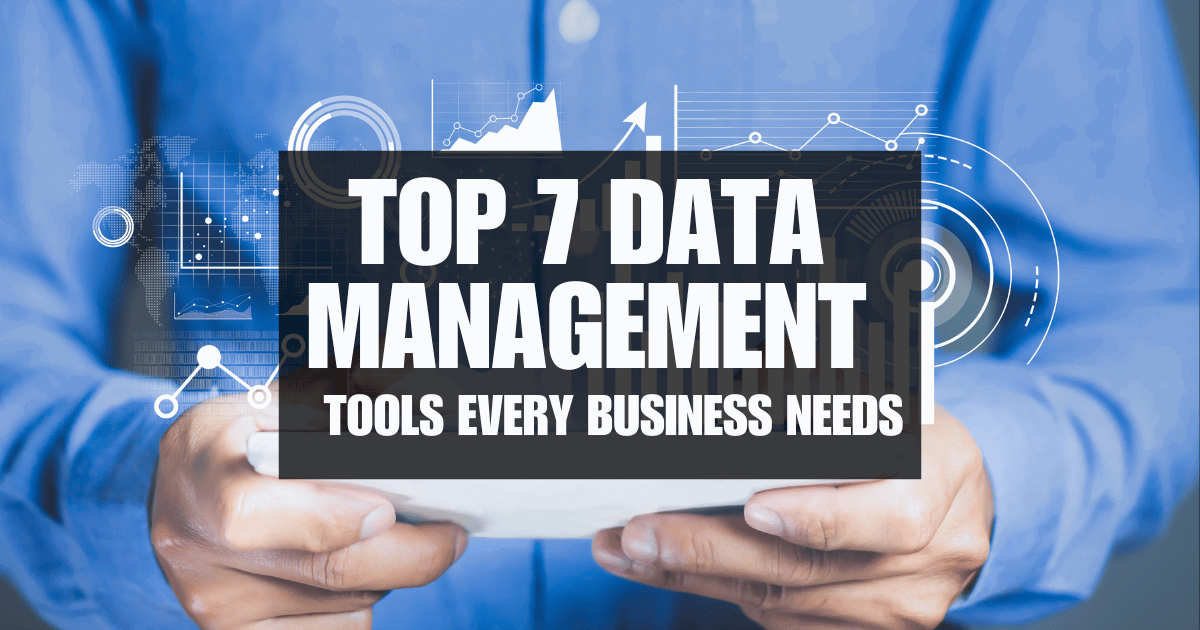Top 7 Data Management Tools Every Business Needs (2025)

In 2025, data is the new Infinity Stone , the ultimate power every business wants to wield. But like in Avengers: Endgame, power without control can lead to chaos. That’s why modern businesses are building their own “data teams” , heroes equipped with intelligent tools to collect, clean, and protect their information universe.
From startups to global enterprises, every company relies on data to make faster, smarter, AI-driven decisions. Yet many still face villains like data silos, duplication, and compliance risks. The good news? A new generation of tools is here to turn messy data into well-choreographed strategy , like Tony Stark’s AI assistant J.A.R.V.I.S. making sense of chaos.
What Should You Look for in a Data Management Platform in 2025?
Think of choosing a data management tool like assembling your Justice League. You need the right mix of heroes each with a unique power:
- AI automation for repetitive cleaning tasks (your Flash of efficiency).
- Multi-cloud compatibility to connect scattered systems (your Superman of reach).
- Strong governance to enforce order (your Batman of control).
- Real-time analytics to react instantly (your Spider-Man of speed).
- Secure integration with CRMs and AI models (your Iron Man of intelligence
Which Tools Are Leading the Data Management Revolution in 2025?
1.Snowflake
If Inception taught us anything, it’s that layers matter and Snowflake’s multi-cluster architecture is exactly that. It separates compute and storage, letting businesses dream bigger without limits.
Key Features:
- Multi-cloud support (AWS, Azure, GCP).
- Zero-copy cloning for fast data replication.
- AI-powered optimization with Snowpark.
- Secure data sharing across organizations.
Best for: Enterprises that need massive scalability and predictable performance—without the confusion of managing hardware or infrastructure.
2.Databricks
If Snowflake is Iron Man, Databricks is Doctor Strange, a master of combining data science and machine learning to shape reality itself. Its “Lakehouse” concept merges the best of both data lakes and warehouses.
Key Features:
- Delta Lake ensures data reliability.
- MLflow for machine learning lifecycle management.
- Real-time collaboration workspace.
- Supports structured & unstructured data.
Best for: AI-driven companies needing unified analytics to train, test, and deploy models effortlessly.
3.Microsoft Azure Synapse Analytics
Azure Synapse is like Nick Fury it connects your team of data heroes (Power BI, Excel, Microsoft Fabric) and ensures everyone operates in sync.
Key Features:
- Deep Power BI integration for visualization.
- Built-in governance via Azure Purview.
- Predictive modeling with Azure Machine Learning.
- Flexible scaling for enterprise data.
Best for: Businesses already invested in the Microsoft ecosystem that want unified collaboration and compliance.
4.Google BigQuery
Like The Flash, BigQuery doesn’t wait around. It’s a serverless platform designed for speed processing terabytes in seconds and integrating AI directly into the query engine.
Key Features:
- Serverless architecture with real-time analytics.
- Pay-per-query model for cost control.
- Vertex AI integration for ML workflows.
- Native connection to Looker for visualization.
Best for: Teams that value real-time insights and want to minimize infrastructure maintenance.
5.IBM Watson Knowledge Catalog
Every epic needs its protector. IBM Watson Knowledge Catalog is the Gandalf of data management, it enforces rules, ensures quality, and prevents bad data from “passing.”
Key Features:
- Automated metadata tagging and classification.
- AI-based policy enforcement and lineage tracking.
- Integration with Cloud Pak for Data.
- Transparent audit trail for compliance.
Best for: Financial, legal, and healthcare sectors that prioritize trust and regulation.
6.Talend Data Fabric
Talend is like Spider-Man: not the biggest name, but always dependable, fast, and creative. It connects scattered systems and delivers clean, reliable data without needing a massive budget.
Key Features:
- 1,000+ connectors for APIs and databases.
- Data profiling and cleansing automation.
- Open-source foundation.
- Hybrid deployment flexibility.
Best for: Mid-sized companies that need an agile, affordable platform for integration and data quality.
7.Oracle Data Management Suite
Think of Oracle as Captain America experienced, disciplined, and built to lead in any battle. With autonomous AI tuning and ironclad security, it keeps enterprise data running at peak performance.
Key Features:
- AI-driven performance optimization.
- Self-healing and self-securing database.
- Data masking & encryption for privacy.
- Oracle Analytics Cloud integration.
Best for: Global enterprises managing mission-critical systems that can’t afford downtime.
What Trends Will Define the Sequel to Data Management in 2026?
- AI-Directed Data Pipelines: Automated orchestration like a movie director guiding every scene.
- Privacy-First Storylines: Ethical data practices becoming part of every “script.”
- Cross-Cloud Cinematic Universes: Seamless collaboration between platforms no more isolated sequels.
- Visual Data Storytelling: Tools like MindMap AI turning raw scripts (data) into cinematic visuals (strategy).
Final Takeaway: What’s the Endgame for Your Business Data?
Like every great saga, success in data management comes from the perfect mix of technology, teamwork, and timing. Whether you pick Snowflake’s scalability, Databricks’ AI depth, or Talend’s accessibility, your real advantage lies in how you connect them and how clearly you visualize your strategy.
In 2025, data management isn’t just a backend function; it’s your business’s director’s cut the version where every decision, every character, and every insight plays a meaningful role
FAQ
1. Why consider BrowserStack alternatives?
Costs, unique workflows, and compliance often drive the switch. Some teams want deeper mobile testing or open-source control.
2. Which alternative is best for startups?
LambdaTest and TestingBot offer approachable pricing. Playwright is free if you can self-host.
3. What about real device testing?
LambdaTest, Sauce Labs, BitBar, TestingBot, and CrossBrowserTesting provide real devices. Check device lists first.
4. Can I run tests in CI/CD easily?
Yes. Most tools integrate with Jenkins, GitHub Actions, GitLab CI, and CircleCI. Playwright and Selenium Grid work well in custom pipelines.
5. Which tool is best for no-code testing?
Ghost Inspector is designed for non-technical users. It is great for regression suites and smoke tests.






